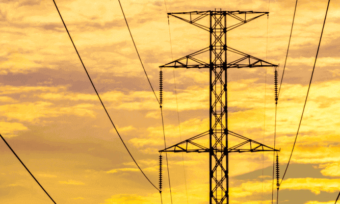Increases to wholesale electricity price caps could be the key to reducing household energy costs and preventing outage risks in the long-term, according to a draft proposal from the electricity rule maker.
Amid concerns of supply reliability over the next decade, the Australian Energy Market Commission (AEMC) – the body responsible for policy change for the electricity grid – has proposed that increasing the price settings in the wholesale market could help to aid reliability and consumer costs.
Wholesale costs refer to those paid and sold by generators and retailers for their power supply and reservations. These are not the everyday costs incurred by households and businesses.
According to analysis by the AEMC, the current price setting in the wholesale market sits far below what is needed to meet the supply, generation and storage requirements of a transitioning energy market.
About 60% of coal-fired generation is forecasted to exit the energy market by 2030, according to the Australian Energy Market Operator (AEMO). This is predicted to cause serious concerns for supply reliability and an elevated blackout risk in several states if new investments aren’t incorporated to cover the coal loss.
The AEMC believes progressively increasing the existing Market Price Cap, Cumulative Price Threshold and the Administered Price Cap would help provide a clearer scope on the additional generational and storage assets needed for the grid during times of high demand.
The Market Price Cap sets the ceiling price for electricity in the wholesale market, while the Cumulative Price Threshold refers to the cost point in a seven-day extreme-price streak that the market will run until before intervention. The Administered Price Cap is then the cost that comes into effect as part of the intervention to prevent prices from further gouging.
These measures are typically only used in instances of extreme price volatility, such as that experienced in June and July of 2022.
AEMC Chair Anna Collyer said adjusting these costs would help to better understand the generational needs of the grid during times of emergency-level demand.
“These changes would encourage more generation and battery storage into the system when we need it most, reducing the risk of damaging outages for electricity consumers and keeping the system stable as we rapidly transition to higher levels of renewable energy and decarbonise our economy.”
If passed, the rule would see prices change for the Administered Price Cap from July 1, 2025, with the Market Price Cap and the Cumulative Price Threshold increased from July 1, 2027.
Does this mean household electricity prices will increase?
While the rule change could help to prevent pricing volatility for household electricity prices in the long-term, there is the chance it will increase prices in the coming years before it evens out.
A rise of 2.7% on average could be expected for household electricity prices in New South Wales, Victoria, Queensland, South Australia, the Australian Capital Territory and Tasmania, if the rule is passed, according to modelling by the AEMC. This increase however, would likely not kick in until 2027 – when the new price settings would come into effect.
The AEMC stated in its proposal that it understood the potential difficulty of further price hikes for households during the cost-of-living crisis, but believed the long-term savings and reliability benefits to the grid would outweigh the short-term price cost increase.
Ms Collyer said the proposed rule change would help the market invest in more generational assets, which in turn, would create more price competition for consumers.
“Importantly, this proposal is designed to have no bearing on electricity prices under typical market conditions. Rather, it enables price fluctuations to encourage new market entrants, thus fostering competition to the benefit of all consumers.”
It should be noted that the price caps in question are used sparingly in the market, and typically only as a safety mechanism during times of high volatility. As such, the impact on prices overall is expected to be fairly minimal for households and businesses.
Consultation submissions for the AEMC’s draft determination are currently open until October 26, 2023.
Image credit: Camp1994/Shutterstock.com







